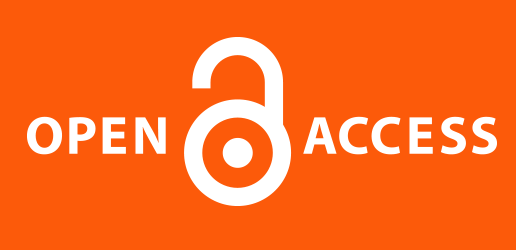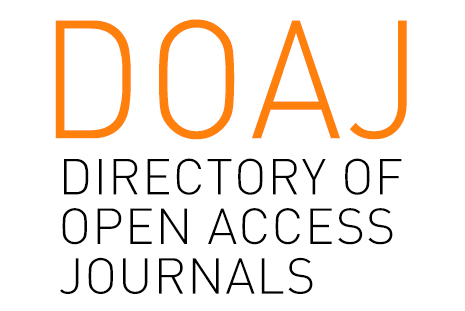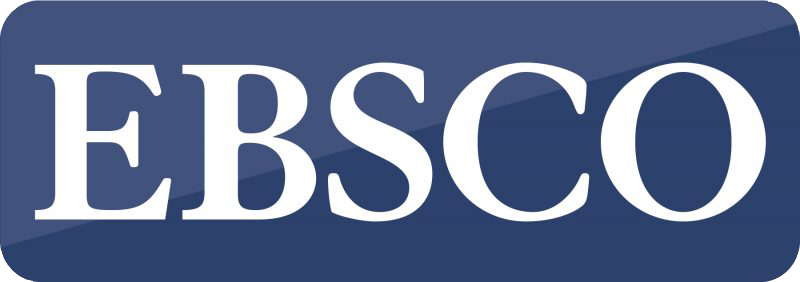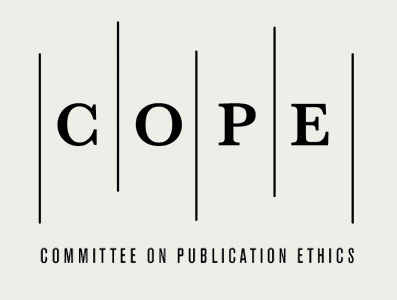Theoretical models and concepts of lifelong learning
Borut Mikulec, University of Ljubljana, Faculty of Arts, Ljubljana, Slovenia, e-mail: borut.mikulec@ff.uni-lj.si
Иновације у настави, XXXVIII, 2025/1, стр. 1–13
| PDF | | Extended summary PDF |
DOI: 10.5937/inovacije2501001M
Summary: On the one hand, a review of different models and concepts of lifelong learning shows that lifelong learning has certain common basic characteristics, i.e. it is lifelong (from “cradle to grave”), it is life-wide (it takes place in different contexts), and it focuses on learning. On the other hand, such an overview also shows that different models and concepts of understanding lifelong learning are in use and that lifelong learning is also a “slippery” and “ambiguous” concept, as it contains different and competing conceptualisations. Based on the analysis of relevant theoretical literature, we argue that lifelong learning is a multidimensional concept that combines different models and conceptualisations of lifelong learning and highlight the fundamental building blocks of a holistic understanding of lifelong learning.
Keywords: adult education, concepts of lifelong learning, international organisations, lifelong education, models of lifelong learning
Борут Микулец
Универзитет у Љубљани, Факултет уметности,
Одсек за педагошке науке, Љубљана, Словенија
ТЕОРИЈСКИ МОДЕЛИ И КОНЦЕПТИ ЦЕЛОЖИВОТНОГ УЧЕЊА
Циљ овог рада је да идентификује различите моделе и концепте целоживотног учења који доминирају теоријским концептуализацијама у међународној арени и да их искористи као основу за разумевање холистичког модела доживотног учења. С једне стране, преглед теорија целоживотног учења показује да ово учење има три основне карактеристике: оно је доживотно, од „колевке до гроба”; то је цео живот, одвија се у породици, у образовним институцијама, на радном месту, у заједници, на јавним местима итд.; и усредсређено је на учење пре него на образовање и образовне институције. С друге стране, овaj преглед такође показује да су у употреби различити модели и концепти разумевања целоживотног учења и да је целоживотно учење такође „клизав” и „двосмислен” концепт јер садржи различите и конкурентне дефиниције. Методолошки оквир коришћен у раду представља анализу релевантне теоријске литературе. На основу тога представљени су следећи главни резултати. Прво, рад показује како се концепт целоживотног учења мењао током времена, наглашавајући значај међународних организација – Организације Уједињених нација за образовање, науку и културу (УНЕСКО), Савета Европе, Организације за економску сарадњу и развој (ОЕЦД) и Европске уније (ЕУ) – у концептуализацији и промовисању концепта од хуманистичког до економског модела целоживотног учења. Друго, у раду се тврди да је целоживотно учење вишедимензионални концепт који комбинује различите моделе и концептуализације целоживотног учења. То су: (1) концептуализација четири модела целоживотног учења: модел еманципације или социјалне правде, културни модел, модел отвореног друштва и модел људског капитала (Schuetze & Casey, 2006); (2) тријадна концептуализација целоживотног учења, која има три различите сврхе: целоживотно учење за економски напредак и развој, целоживотно учење за лични развој и осећање испуњености, целоживотно учење за социјално укључивање и демократизацију (Chapman & Aspin, 1997; Biesta, 2006); 3) разлика између два основна модела: модела људског капитала и хуманистичког модела (Regmi, 2015); 4) модели доживотног учења из перспективе политичке економије: неолиберални или тржишни модел, модел социјалног тржишта и социјалдемократски модел (Green, 2006). Међутим, чак и ако целоживотном учењу недостаје концептуална јасноћа, оно ипак има одређену здраворазумску вредност, што објашњава популарност или прихватање самог концепта. Коначно, рад се завршава истицањем основних темеља холистички заснованог разумевања целоживотног учења, које обухвата три кључне димензије целоживотног учења: (а) економску, односно стицање нових знања и вештина за свет рада, запослење и финансијско благостање, омогућавање ученицима да учествују у бољим пословима и повећају ниво својих прихода; (б) личну, односно учење за бољи живот, здравље, благостање, лични развој и холистичко испуњење људске личности и њених потенцијала; (в) демократску, тј. учење да се живи са другима на демократскији, праведнији и инклузивнији начин, хуманизујући и демократизујући друштво, промовишући активно грађанство, омогућавајући грађанима да се укључе у грађанско друштво и политички живот.
Кључне речи: образовање одраслих, концепти целоживотног учења, међународне организације, целоживотно образовање, модели целоживотног учења
References:
- Aspin, D. N., & Chapman, J. D. (2000). Lifelong learning: concepts and conceptions. International Journal of Lifelong Education, 19(1), 2–19. https://doi.org/10.1080/026013700293421
- Biesta, G. (2006). What’s the Point of Lifelong Learning if Lifelong Learning Has No Point? On the Democratic Deficit of Policies for Lifelong Learning. European Educational Research Journal, 5(3–4), 169–180. https://doi.org/10.2304/eerj.2006.5.3.169
- Biesta, G. (2012). Have lifelong learning and emancipation still something to say to each other?. Studies in the Education of Adults, 44(1), 5–20. https://doi.org/10.1080/02660830.2012.11661620
- Biesta, G. (2022). Reclaiming a future that has not yet been: The Faure report, UNESCO’s humanism and the need for the emancipation of education. International Review of Education, 68(5), 655–672. https://doi.org/10.1007/s11159-021-09921-x.
- Boshier, R. (2005). Lifelong Learning. In L. M. English (Ed.). International Encyclopedia of Adult Education (pp. 373–378). Palgrave Macmillan.
- Chapman, J. D., & Aspin, D. N. (1997). The school, the community and lifelong learning. Cassell.
- Dehmel, A. (2006). Making a European area of lifelong learning a reality? Some critical reflections on the European Union’s lifelong learning policies. Comparative Education, 42(1), 49–62. https://doi.org/10.1080/03050060500515744
- Delors, J., Mufti, I. A., & Amagi, I. et al. (1996). Learning: The treasure within. UNESCO Publishing.
- Elfert, M. (2015). UNESCO, the Faure Report, the Delors Report, and the Political Utopia of Lifelong Learning. European Journal of Education, 50(1), 88–100. https://doi.org/10.1111/ejed.12104
- Elfert, M. (2017). UNESCO’s Utopia of Lifelong Learning. Routledge.
- Elfert, M., & Rubenson, K. (2022). Lifelong Learning: Researching a Contested Concept in the Twenty-First Century. In K. Evans, W. O. Lee, J. Markowitsch, & M. Zukas (Eds.). Third International Handbook of Lifelong Learning (pp. 1–25). Springer Cham.
- English, L. M., Mayo, P. (2012). Learning with Adults: A Critical Pedagogical Introduction. Sense Publishers.
- English, L. M., & Mayo, P. (2021). Lifelong Learning, Global Social Justice, and Sustainability. Palgrave Macmillan.
- Faure, E., Herrera, F., Kaddoura, A-R., Lopes, H., Petrovsky, A. V., Rahnema, M., & Ward, F. C. (1972). Learning to be: The world of education today and tomorrow. UNESCO.
- Fejes, A. (2010). Discourses on employability: constituting the responsible citizen. Studies in Continuing Education, 32(2), 89–102. https://doi.org/10.1080/0158037X.2010.488353
- Field, J. (2001). Lifelong education. International Journal of Lifelong Education, 20 (1–2), 3–15. https://doi.org/10.1080/09638280010008291
- Field, J. (2005). Social capital and lifelong learning. The Policy Press.
- Fleming, T. (2021). Models of Lifelong Learning: An Overview. In M. London (Ed.), The Oxford Handbook of Lifelong Learning (2nd edn.) (pp. 35–56). Oxford University Press.
- Frimannsson, G. H. (2006). Introduction: Is there a Nordic model in education?. Scandinavian Journal of Educational Research, 50(3), 223–228. https://doi.org/10.1080/00313830600743233
- Gravani, M. N., Zarifis, G. K. (2014). Introduction. In G. K. Zarifis, & M. N. Gravani (Eds.). Challenging the ‘European area of lifelong learning’ (pp. 1–13). Springer.
- Green, A. (2002). The Many Faces of Lifelong Learning: Recent Education Policy Trends in Europe. Journal of Education Policy, 17(6), 611–626. https://doi.org/10.1080/0268093022000032274
- Green, A. (2006). Models of Lifelong Learning and the ‘knowledge society’. Compare, 36(3), 307–325. https://doi.org/10.1080/03057920600872449
- Green, A. (2021). Models of Lifelong Learning and Their Outcomes. How Distinctive is the ‘Nordic Model’ Now?. https://www.llakes.ac.uk/wp-content/uploads/2021/11/70.-Andy-Green-LLAKES-Research-paperon-Nordic-model-19.10.2021-v.3.pdf
- Griffin, C. (2006). Research and policy in lifelong learning. International Journal of Lifelong Education, 25(6), 561–574. https://doi.org/10.1080/02601370600989244
- Hager, P. J. (2011). Concepts and Definitions of Lifelong Learning. In M. London (Ed.). The Oxford Handbook of Lifelong Learning (pp. 12–25). Oxford University Press.
- Hake, B. J. (2018). Éducation permanente in France en route to ‘permanent education’ at the Council of Europe? Revisiting a project social to create ‘a long life of learning’. History of Education, 47(6), 779–805. https://doi.org/10.1080/0046760X.2018.1484182
- Hake, B. (2021). Mapping our way out? Critical reflections on historical research and the Faure report. European Journal for Research on the Education and Learning of Adults, 13(2), 125–141. https://doi.org/10.3384/rela.2000-7426.3584
- Jarvis, P. (2008). Introduction. In P. Jarvis (Ed.). The Routledge International Handbook of Lifelong Learning (pp. 1–5). Routledge.
- Larson, A., & Cort, P. (2022). Qualification, socialisation and/or subjectification – three international organisations’ prioritisation of the purposes of adult education and learning from the 1970s to the 2010s. International Journal of Lifelong Education, 41(1), 91–106. https://doi.org/10.1080/02601370.2022.2030422
- Lima, L. C., Guimarães, P., & Mikulec, B. (2022). The debate on intergovernmental organisations and adult learning and education policies: intersections between the political and scientific fields. International Journal of Lifelong Education, 41(6), 572–596. https://doi.org/10.1080/02601370.2022.2110619
- Lundahl, L. (2016). Equality, inclusion and marketization of Nordic education: Introductory notes. Research in Comparative & International Education, 11(1), 3–12. https://doi.org/10.1177/1745499916631059
- Mikulec, B. (2021). What Should Transform? Adult Education, Sustainable Development and Environmental Movements. Andragoška spoznanja / Studies in Adult Education and Learning, 27(1), 3–21. https://doi.org/10.4312/as/9922
- Milana, M. (2012). Globalisation, transnational policies and adult education. International Review of Education, 58(6), 777–797. https://doi.org/10.1007/s11159-012-9313-5
- Rappleye, J., & Komatsu, H. (2021). Is knowledge capital theory degenerate? PIAAC, PISA, and economic growth. Compare: A Journal of Comparative and International Education, 51(2), 240–258. https://doi.org/10.1080/03057925.2019.1612233
- Regmi, K. D. (2015). Lifelong learning: Foundational models, underlying assumptions and critiques. International Review of Education, 61(2), 133–151.
- Rubenson, K. (2006). The Nordic model of Lifelong Learning. Compare, 36(3), 327–341. https://doi.org/10.1080/03057920600872472
- Schuetze, H. G. (2006). International concepts and agendas of Lifelong Learning. Compare, 36(3), 289–306. https://doi.org/10.1080/03057920600872381
- Schuetze, H. G., & Casey, C. (2006). Introduction: Models and meanings of Lifelong Learning: progress and barriers on the road to a Learning Society. Compare, 36(3), 279–287. https://doi.org/10.1080/03057920600872365
- UNESCO (2022). Making lifelong learning a reality. UNESCO Institute for Lifelong Learning.
- United Nations (2015). Transforming Our World: The 2030 Agenda for Sustainable Development. https://sustainabledevelopment.un.org/content/documents/21252030%20Agenda%20for%20Sustainable%20Development%20web.pdf
- Wildemeersch, D., & Olesen, H. S. (2012). Editorial: The effects of policies for the education and learning of adults – from ‘adult education’ to ‘lifelong learning’, form ‘emancipation’ to ‘empowerment’. European Journal for Research on the Education and Learning of Adults, 3(2), 97–101. https://doi.org/10.3384/rela.2000-7426.relae5
Copyright © 2025 by the publisher Faculty of Education, University of Belgrade, SERBIA. This is an open access article distributed under the terms of the Creative Commons Attribution License (CC BY 4.0) (https://creativecommons.org/licenses/by/4.0/), which permits unrestricted use, distribution, and reproduction in any medium, provided the original paper is accurately cited.





